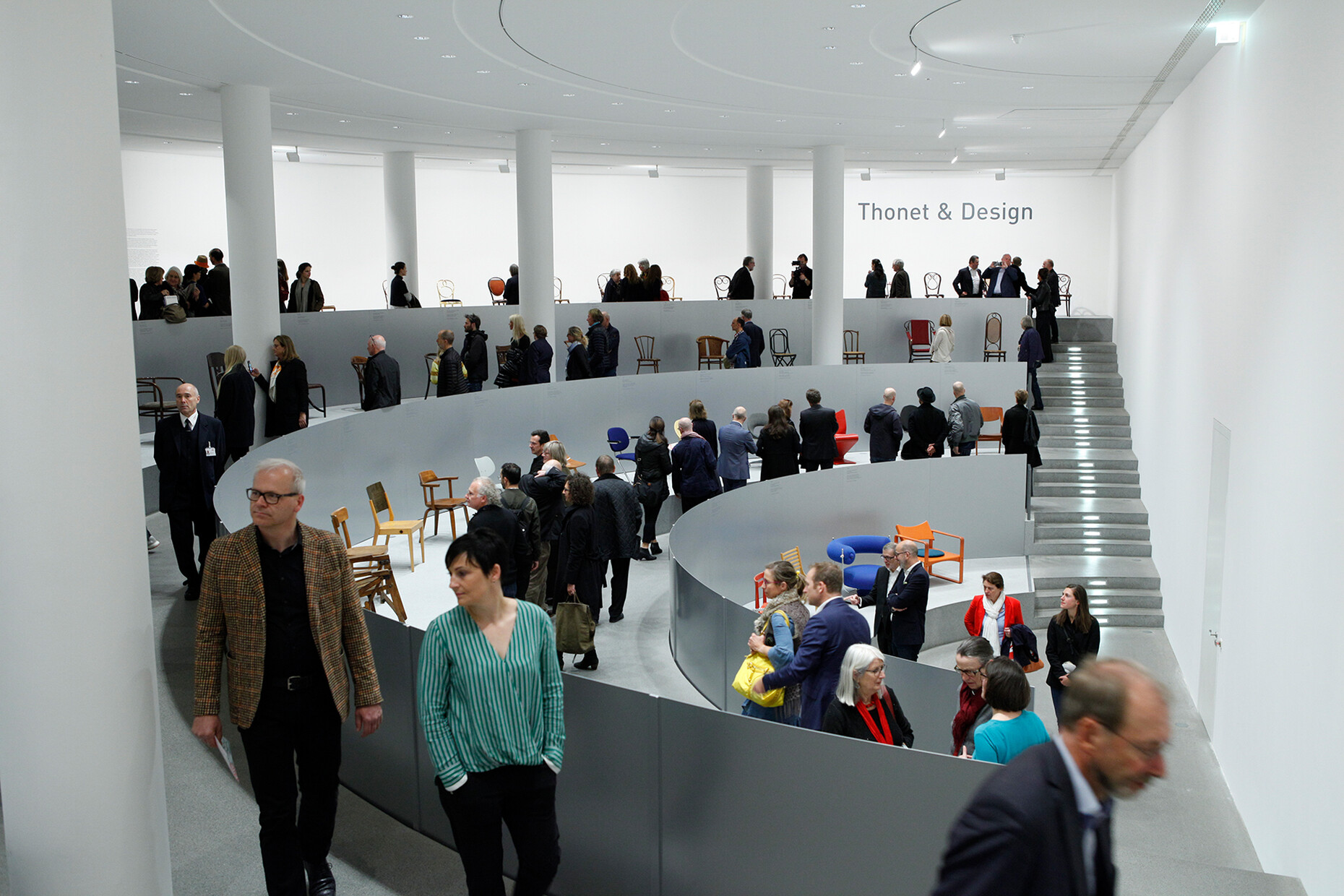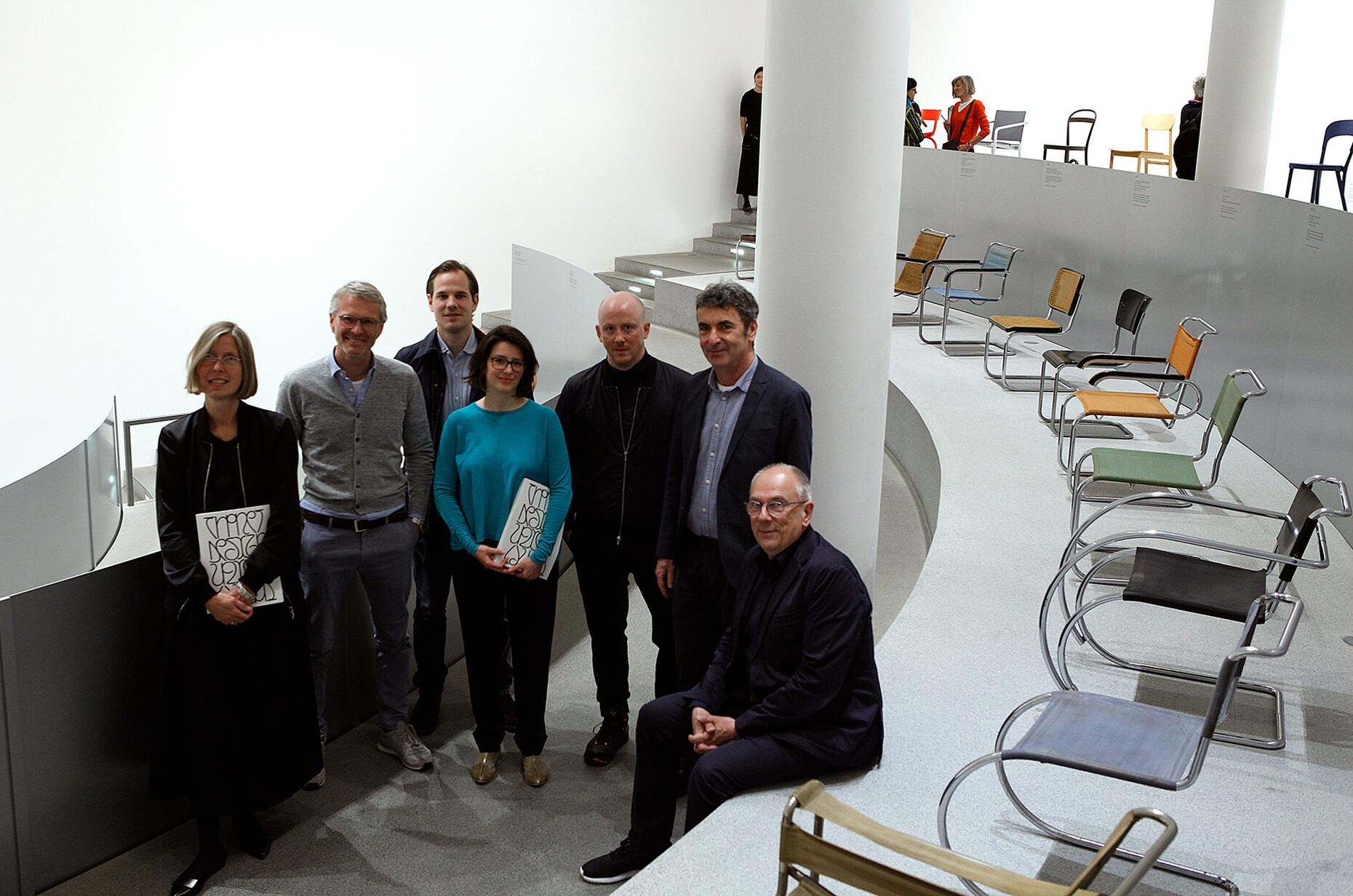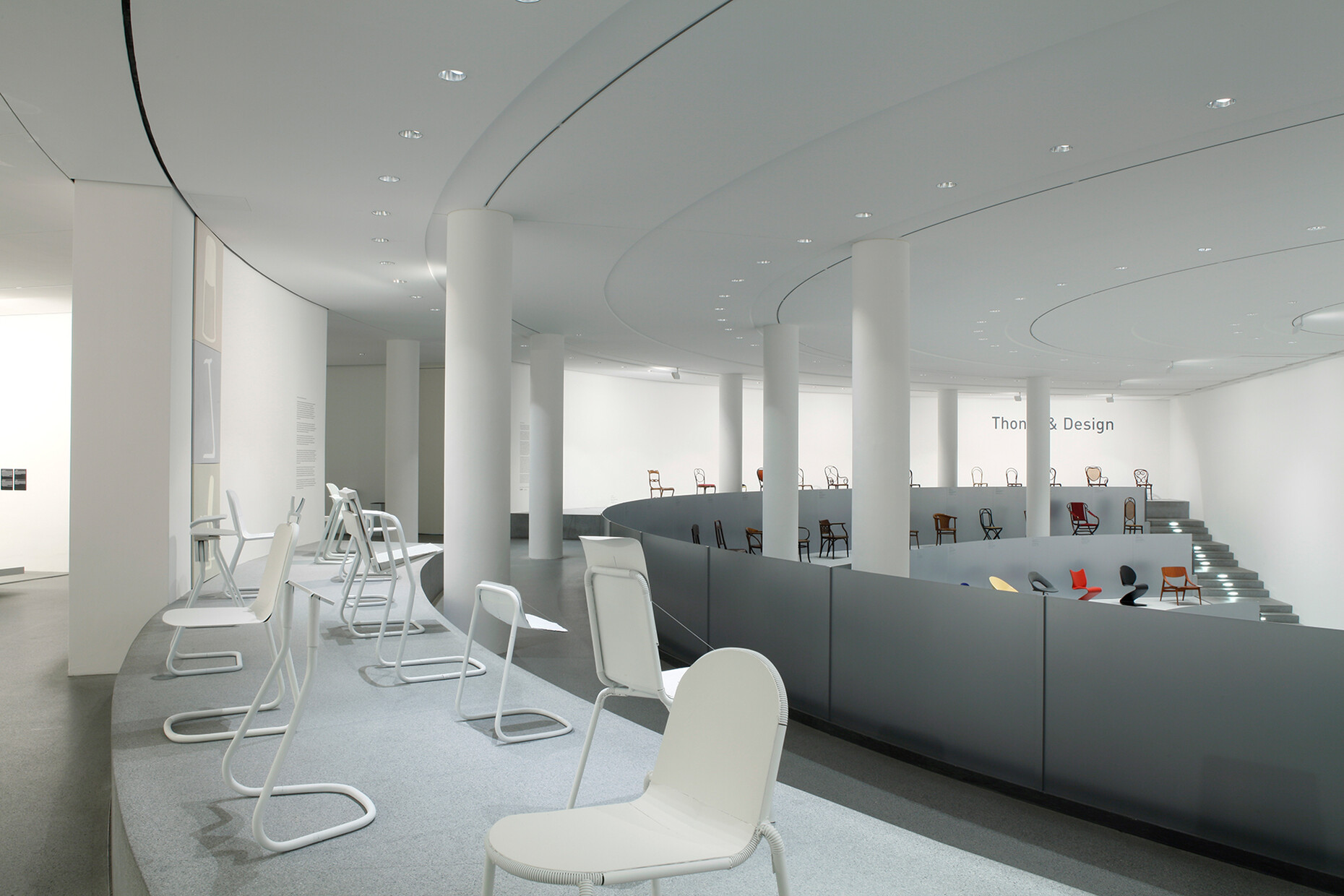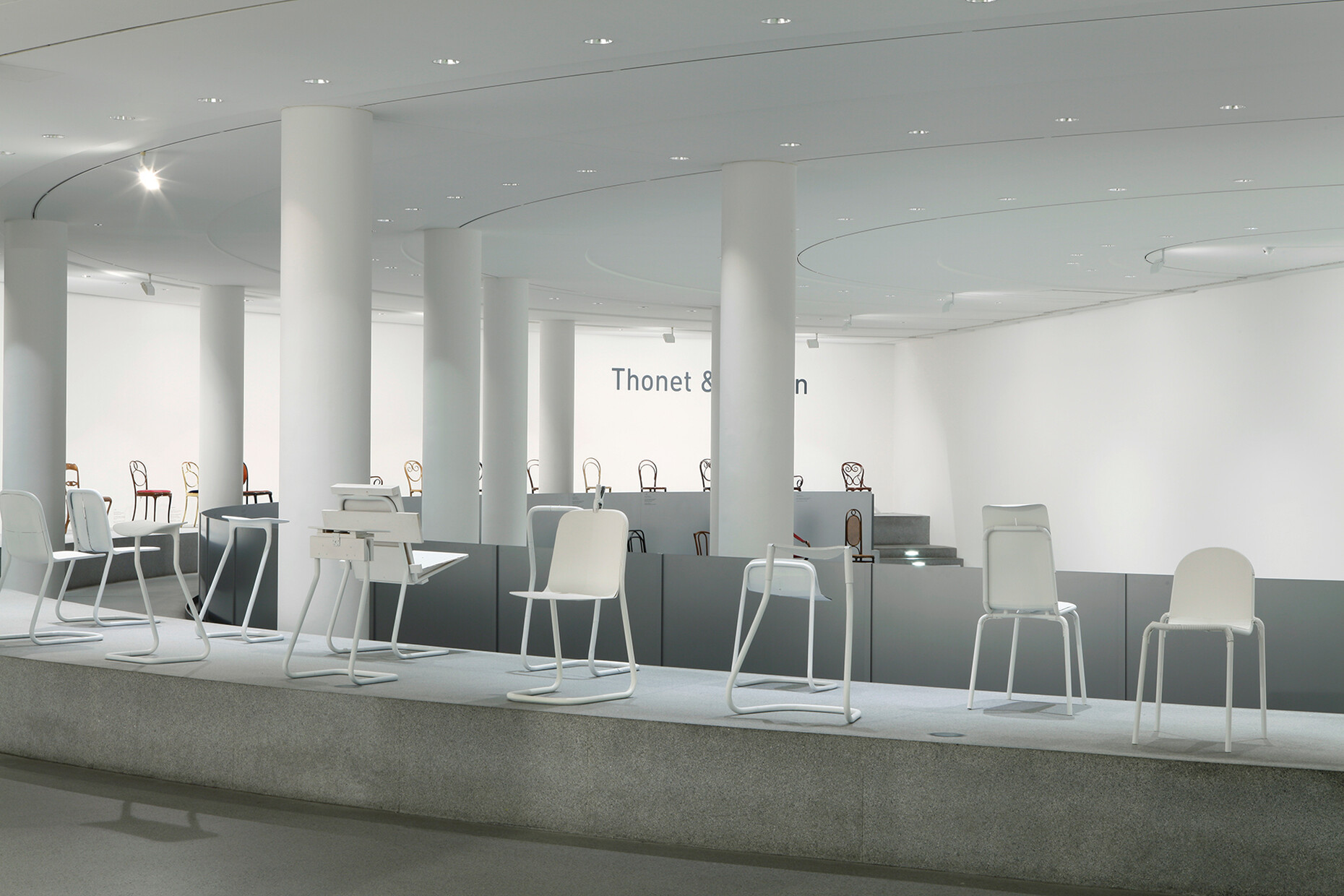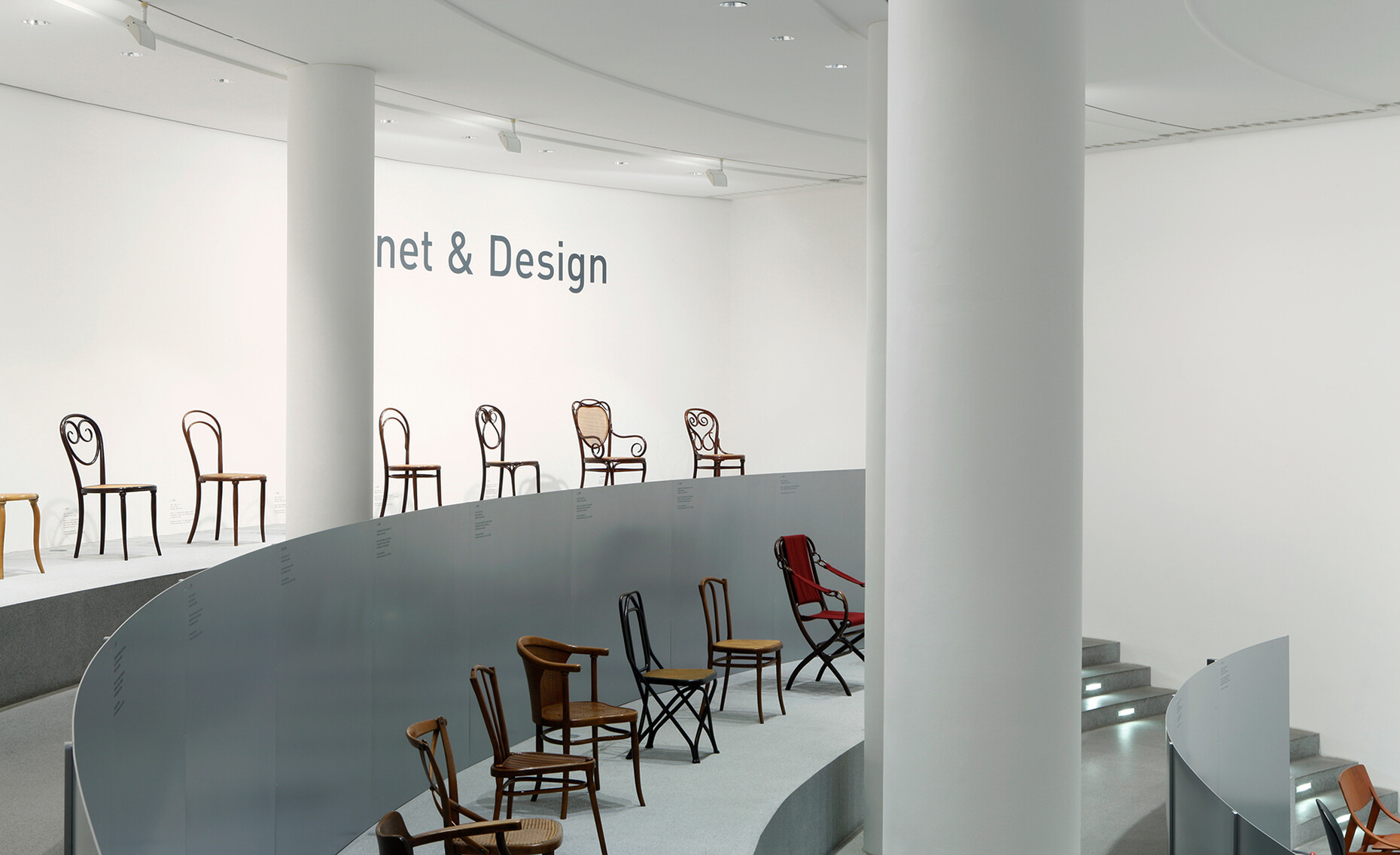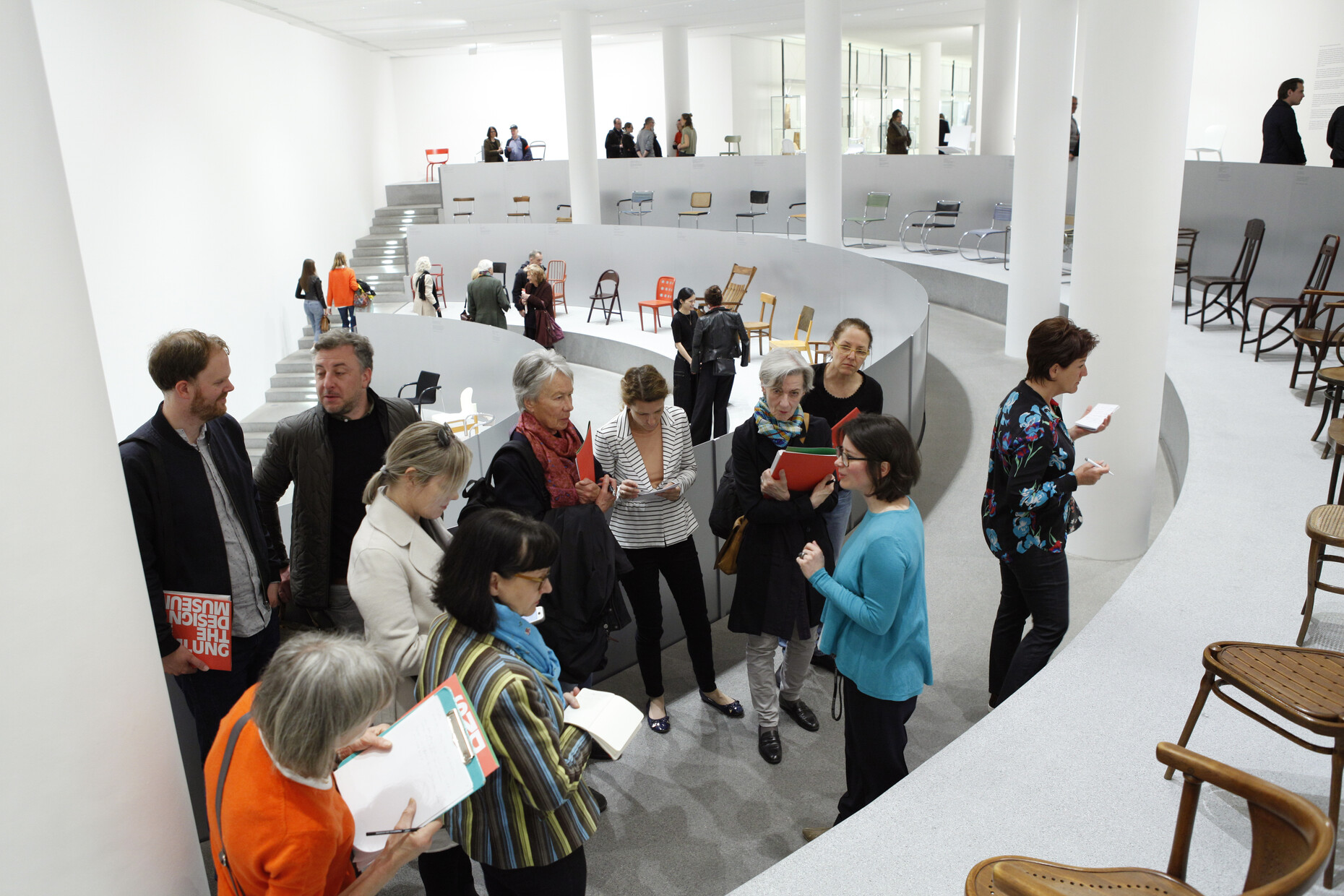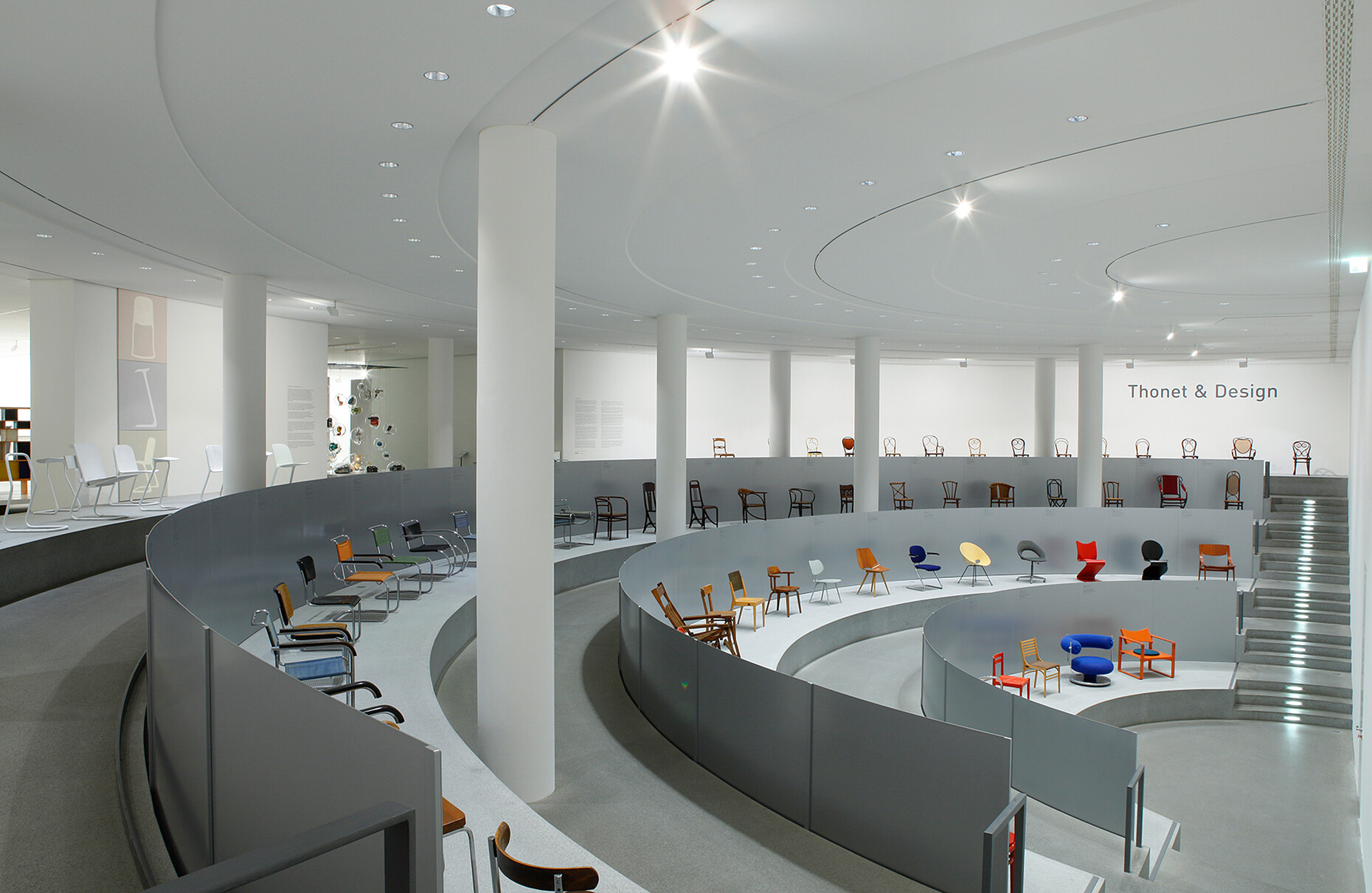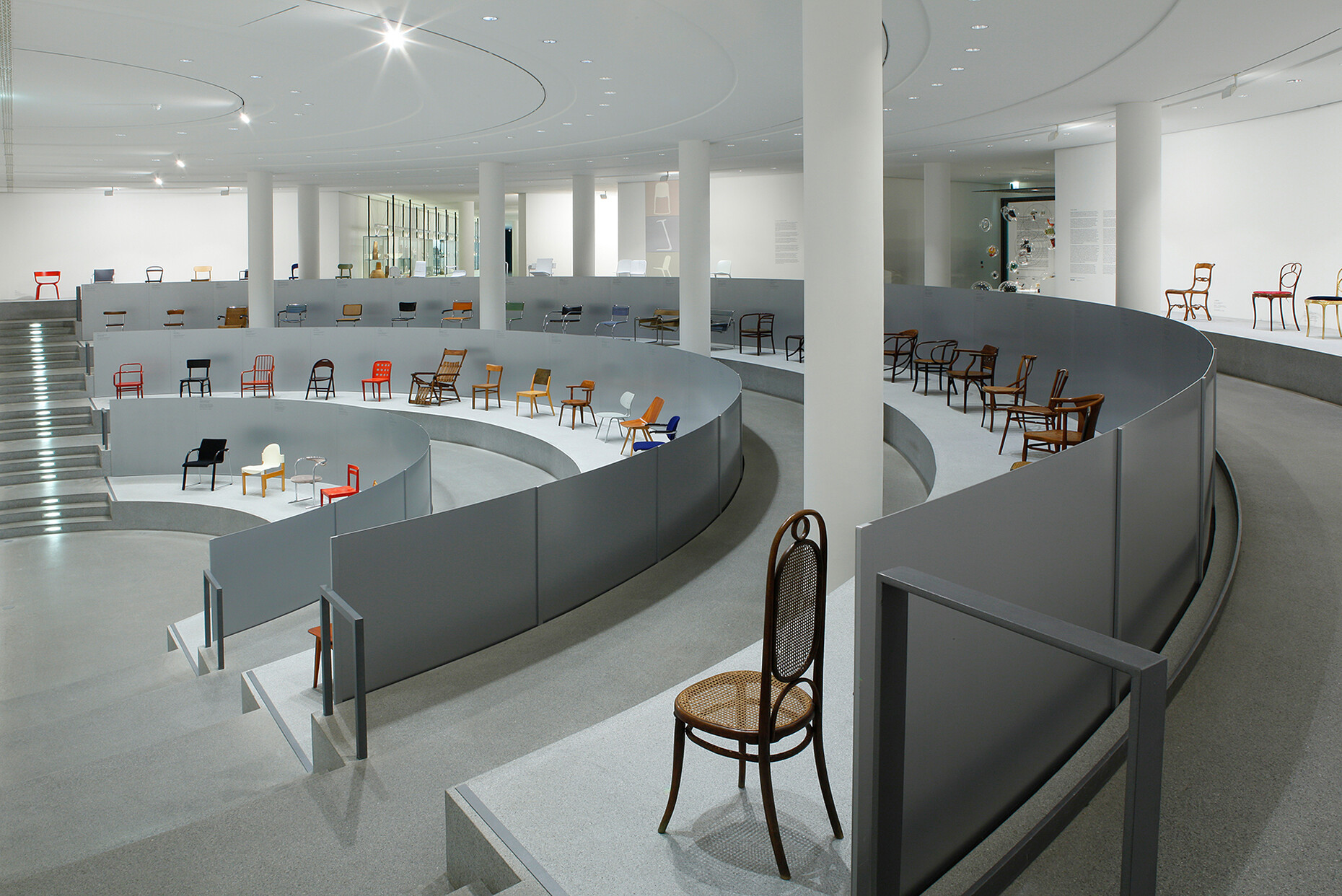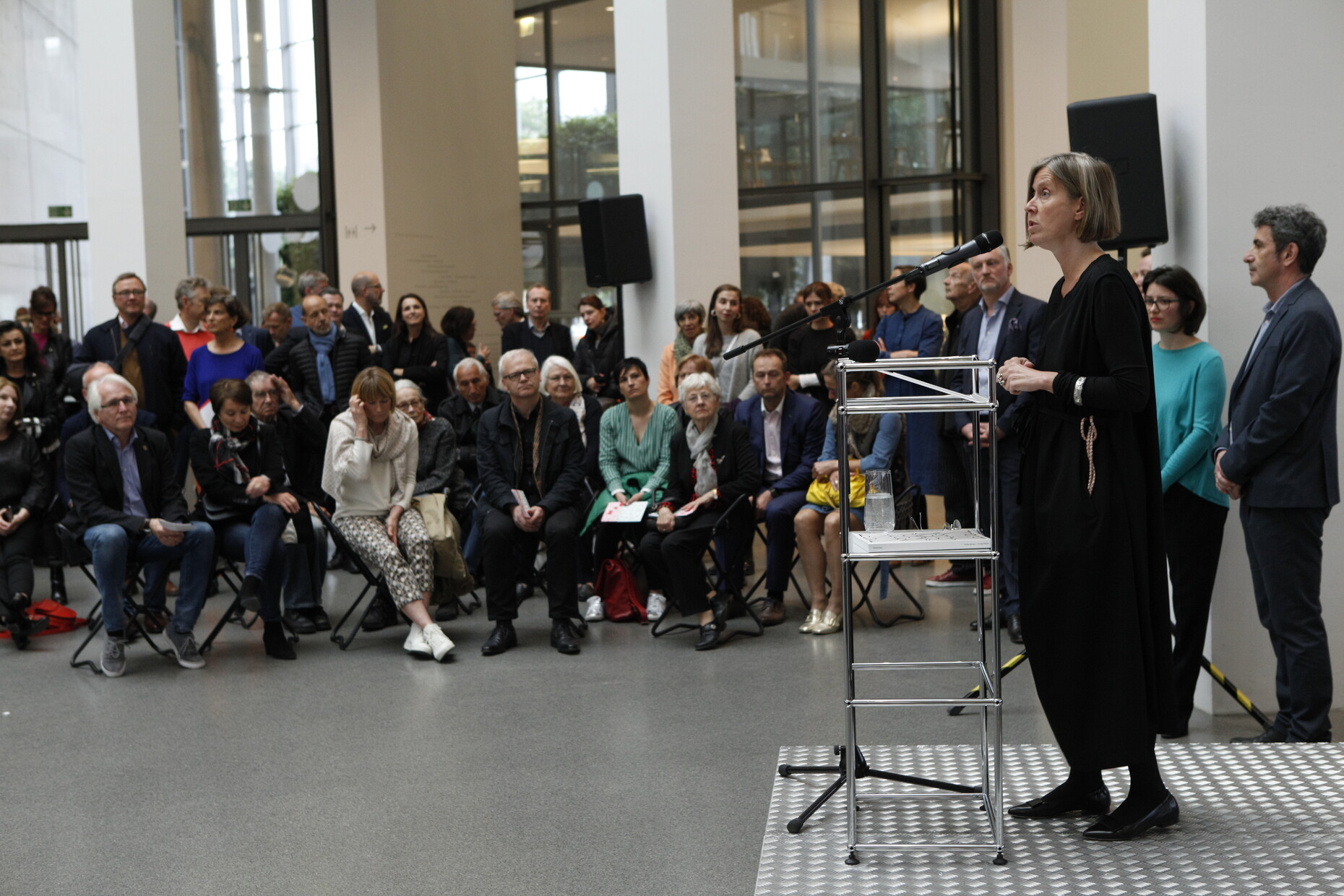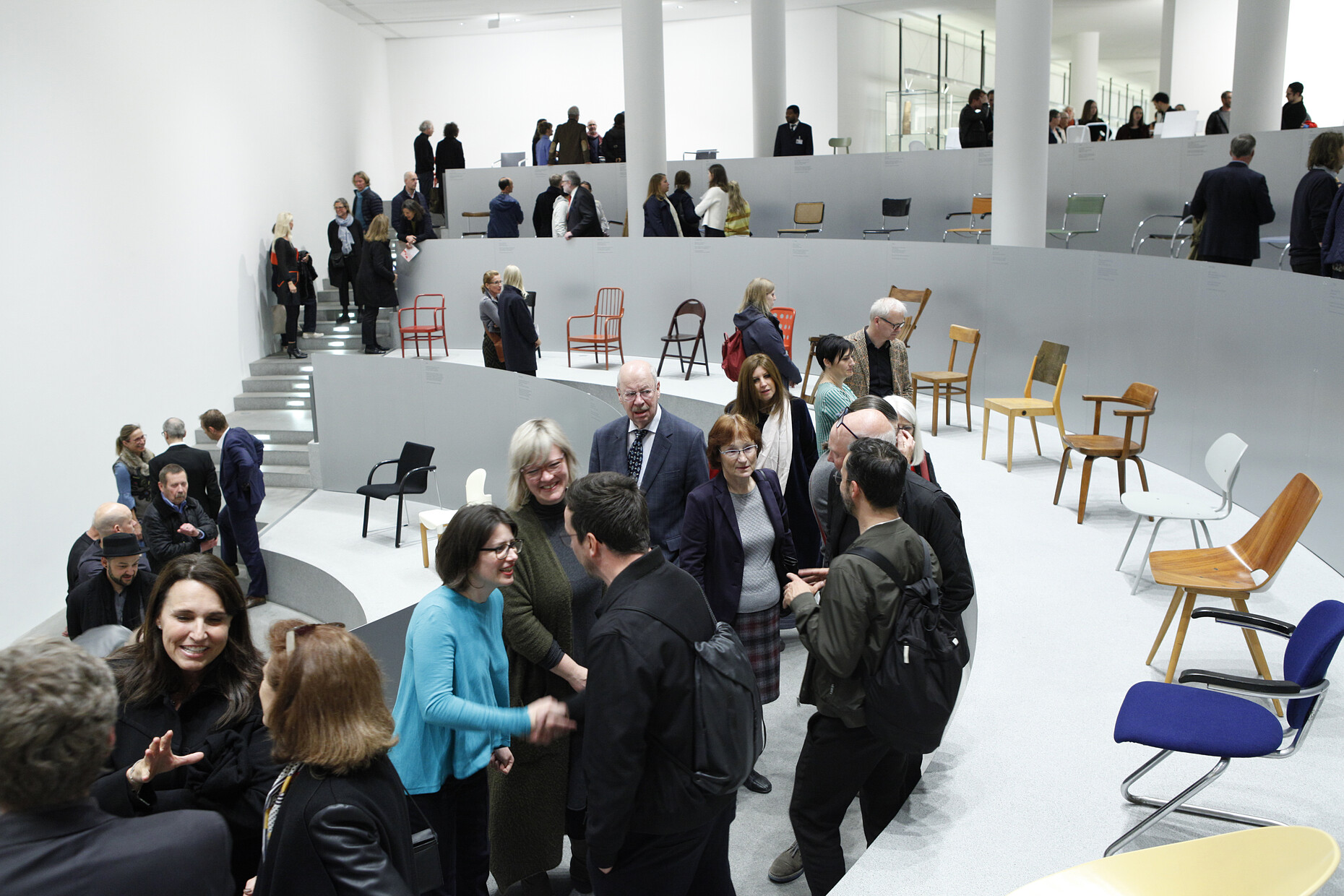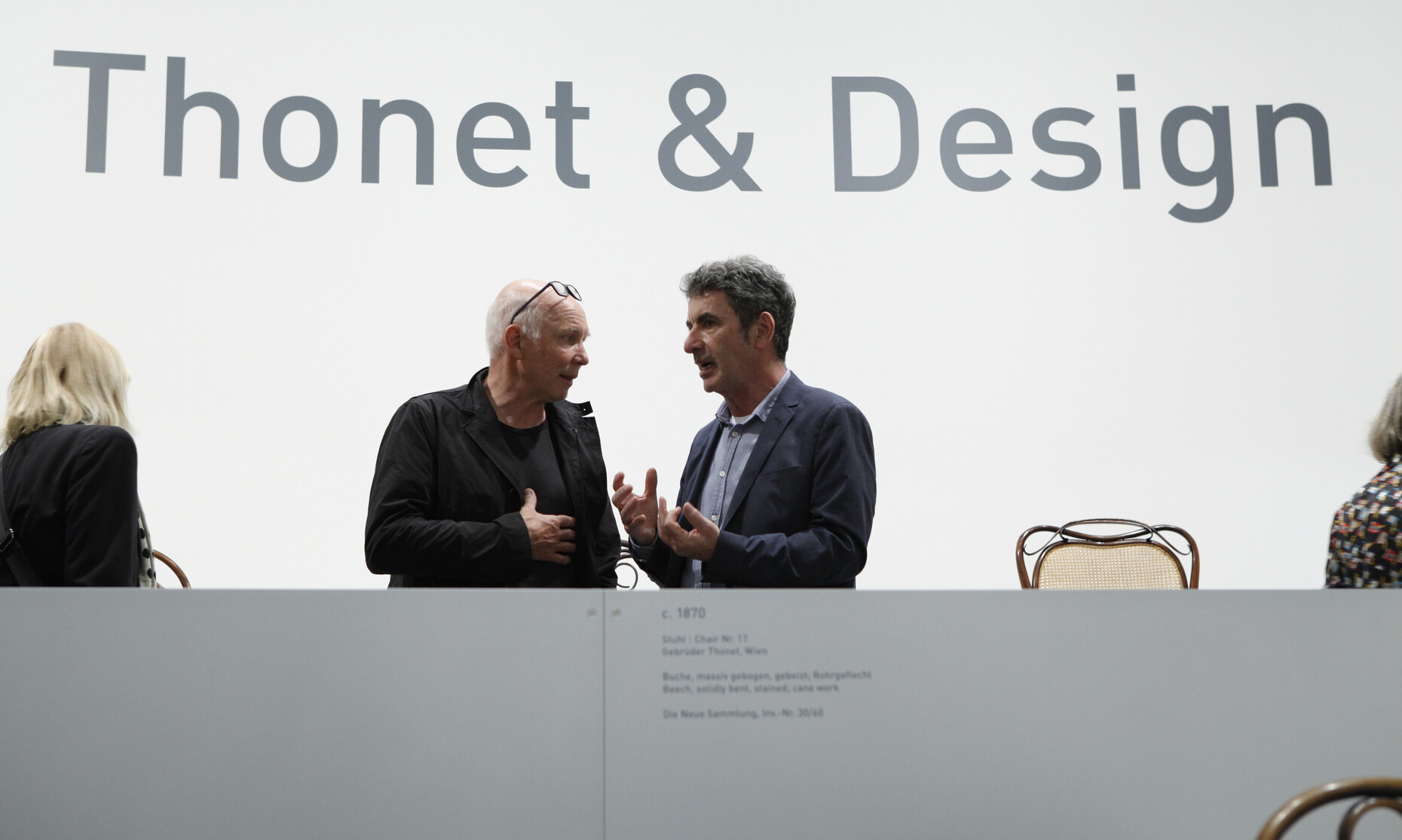100 YEARS OF BAUHAUS
An extremely vibrant monument
Entering the redesigned Thonet room in Die Neue Sammlung – The Design Museum in Munich, you almost feel slightly exalted. As if from the gods in a theater you look across the tiered, semi-circular space. Dimly lit before the alterations, the consistently bright lighting now enables dimensions of this amphitheater to be fully appreciated. Whereas previously it was the fragmented exhibition architecture that set the tone, designer Steffen Kehrle and curators Xenia Riemann-Tyroller and Josef Straßer have now put the exhibits firmly in the limelight. “It was important for us to showcase the objects’ beauty,” Steffen Kehrle says by way of explanation of his creative approach. Each of the almost 70 Thonet chairs chosen for the new presentation faces the observer and is framed by an aluminum balustrade. “We wanted each object to have its own space,” says Xenia Riemann-Tyroller. And that is precisely what the exhibits have. Nothing looks confined, nothing seems oppressive. Every chair faces the observer as a design in its own right, one that stands for itself. Its place in industrial and technological history, previously the thrust of the collection’s presentation, is now only subtly hinted at. “We rendered the concept of mass production, which was crucial in Thonet’s success, in the consistent, almost rhythmical positioning of the chairs,” Riemann-Tyroller explains.
Producing furniture with minimal effort and maximum material utilization was the idea to which Michael Thonet, a carpenter from Boppard am Rhein, devoted his life. In 1819, i.e., exactly 200 years ago, he opened his own workshop. As of around 1830 he began experimenting with bending wood. At the beginning of the exhibition, what became known as the “Boppard Chair”, which was probably made towards the end of the 1830s, making it one of the oldest preserved Thonet chairs there is, illustrates these initial steps. But there was no client base for these innovatively manufactured products, even though to begin with the technology was bashfully concealed beneath veneer. Salvation came in the shape of the Austrian State Chancellor von Metternich, who – though the details are questionable – became aware of Michael Thonet and convinced him to move to Vienna. It was from there that Thonet conquered the market, something that a technological breakthrough made possible: Instead of using plywood and glue, the company started bending solid round timber into shape with steam and pressure. This not only enabled large-scale serial production, it also meant that the various parts of the chair could be manufactured independently, which in turn meant that the chairs could be shipped in a small amount of space and only assembled at their destination – a huge cost advantage, as this way 36 models of the famous type 14 (today 214) coffee house chair fitted into a single shipping crate. Until the outbreak of the First World War Thonet sold around 50 million copies of the chair all over the world. In other fields as well, however, the company was a pioneer when it came to cutting-edge industrial model construction. The company no longer produced to order but rather kept the goods in store. Catalogs became the main marketing tool. The range was enormous, with some 1,400 models being produced by 1914.
Die Neue Sammlung owns more 400 of them, making it one of the biggest collections of Thonet furniture in the world. The chairs from all eras chosen for the permanent exhibition are impressive evidence of the unwavering innovative strength of the company, whose 200-year history is also a reflection of the political upheavals in Europe. A history which leads from Boppard to Vienna and then further afield to Bohemia and Moravia, where the factories for producing the furniture were then built. It is a history which also saw the loss of almost all the production sites in the Second World War and a return to Germany, to Frankenberg in the north of the State of Hessen.
Yet the exhibition is also a reflection of almost 200 years of design history, beginning with the late Biedermeier era. There is evidence of almost all 20thand 21stcentury style trends in the exhibits including, of course, the classics made of bentwood and, as of around 1930, of tubular steel, a material which Mart Stam and Marcel Breuer discovered for furniture making at the Bauhaus. That said, there are also little-known designs on display, for example an armchair made of plywood, which in 1951-2 Walter Gropius, who at the time had long since been a professor at Harvard University, and Benjamin S. Thompson designed for the independent subsidiary company Thonet Industries USA. The chair was never marketed in Europe and also fell into oblivion at Thonet in Frankenberg. In time for the exhibition, the curator Josef Straßer managed to acquire a copy from a dealer in Indiana. With regard to some pieces from the 1970s and 1980s it proved easier to find items missing in the holdings – the curator Xenia Riemann-Tyroller came across them at friendly "Thonetologists".
Thonet & Design
Die Neue Sammlung - The Design Museum
Türkenstraße 15
80333 München
since May 17, 2019
Opening hours:
10 a.m. to 6 p.m. (Tue., Wed., Fri.-Sun.)
10 a.m. to 8 p.m. (Thu.)
Monday closed
